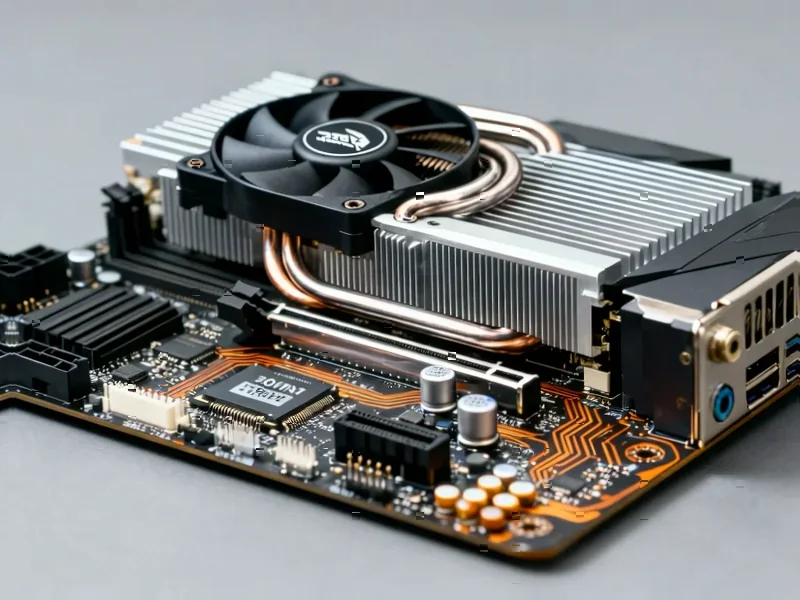According to Embedded Computing Design, AMD/Xilinx has launched Spartan UltraScale+ FPGAs designed for demanding safety-critical applications including medical equipment, factory automation, robotics, and wireless infrastructure. These cost-optimized FPGAs feature densities ranging from 11K to 218K logic cells with support for up to 572 I/Os and leverage 16nm FinFET technology to deliver up to 30% power reduction. The devices offer high-speed 16.3Gb/s transceivers and support PCIe Gen4, MIPI D-PHY, and LPDDR4x/5 memory interfaces while featuring advanced security capabilities to protect intellectual property and prevent tampering. The FPGAs are supported by AMD’s Vivado design software environment, which spans multiple process nodes from 28nm to 7nm. This represents a significant step in making high-performance FPGA technology accessible to cost-sensitive applications.
The Edge Computing Inflection Point
What makes the Spartan UltraScale+ launch particularly significant is its timing in the broader technology landscape. We’re witnessing a fundamental shift from centralized cloud computing to distributed edge intelligence, driven by latency requirements, bandwidth constraints, and privacy concerns. The specifications of these new FPGAs directly address the three critical challenges facing edge deployment: power efficiency, security, and cost. The 30% power reduction isn’t just a technical specification—it’s the difference between battery-powered industrial sensors lasting months versus years, between heat management becoming a non-issue versus a design constraint, and between deployment in remote locations becoming practical versus impossible.
Transforming Industrial Automation Economics
The industrial automation sector stands to gain tremendously from this technology evolution. Traditional programmable logic controllers (PLCs) and industrial PCs are increasingly being supplemented or replaced by FPGA-based solutions that offer greater flexibility and performance. With densities up to 218K logic cells and extensive I/O capabilities, these FPGAs can handle complex sensor fusion, real-time control algorithms, and predictive maintenance analytics at the edge—functions that previously required multiple discrete components or expensive custom ASICs. This consolidation reduces system complexity while increasing reliability, a crucial consideration for safety-critical applications where downtime costs thousands per minute.
The Embedded Security Imperative
Perhaps the most forward-thinking aspect of this announcement is the emphasis on security features. As industrial systems become increasingly connected, they represent attractive targets for cyberattacks with potentially catastrophic consequences. The ability to protect intellectual property and prevent hardware tampering at the FPGA level addresses a critical vulnerability in the industrial IoT stack. This isn’t just about protecting algorithms—it’s about ensuring the integrity of manufacturing processes, medical device operations, and critical infrastructure. The security features embedded in these FPGAs represent a necessary evolution toward hardware-rooted trust in environments where software-only security solutions are insufficient.
Broader Market Implications
Looking ahead 12-24 months, we can expect to see these FPGAs enabling new classes of edge devices that weren’t economically feasible before. The combination of cost optimization with advanced features creates opportunities in smart agriculture, distributed energy systems, and autonomous retail environments. Competitors like Intel (through its Altera division) will need to respond with similarly positioned products, potentially accelerating innovation across the entire FPGA market. The support for multiple memory standards and interface protocols also suggests AMD is positioning these devices as bridge solutions during industry transitions, giving developers flexibility as standards continue to evolve.
The Vivado Ecosystem Advantage
The integration with AMD’s Vivado design environment represents a strategic advantage that extends beyond technical specifications. By providing a unified development environment spanning multiple process nodes and device families, AMD reduces the learning curve and development time for engineers moving between projects or scaling solutions. This ecosystem approach creates stickiness—once developers invest in mastering the Vivado toolchain, they’re more likely to stay within the AMD ecosystem for future projects. The single IDE supporting everything from 28nm to 7nm processes also future-proofs development investments, an important consideration for industrial applications where product lifecycles can span decades.




